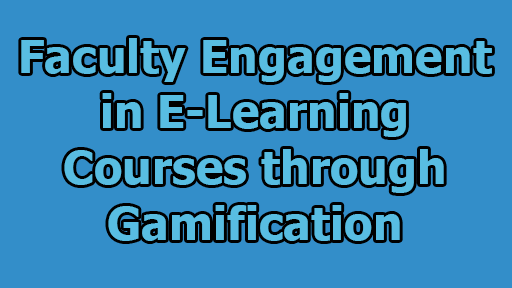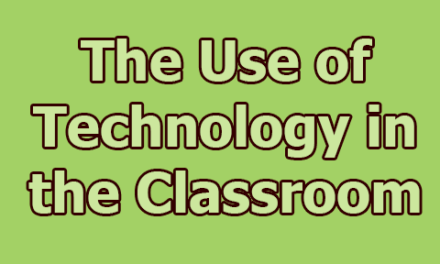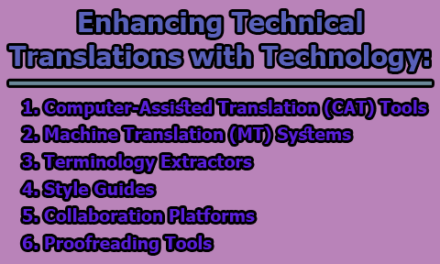Faculty Engagement in E-Learning Courses through Gamification:
E-learning has become an integral part of education, offering convenience and accessibility to learners worldwide. To enhance the quality and effectiveness of these courses, the incorporation of gamification is gaining recognition as a powerful tool. Gamification involves using game elements and mechanics in non-game contexts, such as e-learning courses, to motivate, engage, and foster learning. While it has traditionally been seen as a way to engage students, gamification can also serve as a vital tool to engage faculty in e-learning courses, providing benefits to instructors, course designers, and administrators. In this article, we will explore how faculty engagement in e-learning courses through gamification.
Benefits of Gamification for Faculty:
- Instructors: Gamification empowers instructors to design more engaging and interactive learning activities, assess student progress and performance, and provide timely and meaningful feedback. By incorporating game elements, instructors can create a dynamic and motivating environment that encourages active participation and boosts student engagement.
- Designers: For course designers, gamification is a powerful tool to apply pedagogical principles and align learning objectives and outcomes. It allows them to create immersive and authentic learning environments that are both enjoyable and effective. By infusing gamified elements, designers can craft courses that provide students with a sense of achievement and purpose.
- Administrators: Administrators can also benefit from gamification. It helps them monitor and evaluate e-learning courses, support faculty development, and recognize the efforts of instructors and designers. Furthermore, it can promote a culture of innovation and collaboration among faculty, fostering a sense of community and shared goals within the institution.
Examples of Gamification for Faculty:
Gamification strategies for faculty can take various forms:
- Points, Badges, and Leaderboards: These are common gamification elements that encourage faculty to complete tasks, achieve goals, or demonstrate skills. Leaderboards, for instance, can spark friendly competition among instructors, driving them to excel.
- Levels, Quests, and Challenges: Providing structure and progression, levels, quests, and challenges create a sense of challenge and curiosity. Faculty can work towards completing these tasks, ensuring a dynamic learning environment.
- Narratives, Characters, and Avatars: These elements offer context and identity to faculty, immersing them in the e-learning experience. By adopting avatars or participating in narratives, instructors and designers can enjoy a more personalized experience.
- Feedback, Rewards, and Incentives: Offering information and motivation, feedback and rewards provide a sense of achievement and satisfaction. Instructors receive immediate feedback on their performance, which can boost their engagement.
Tips for Gamification for Faculty:
To make gamification effective and appropriate for faculty, consider the following tips:
- Define Clear Goals: Clearly define your goals and objectives for implementing gamification and determine how to measure success.
- Consider Faculty Characteristics: Understand the motivations, interests, and preferences of your faculty to tailor gamification elements to their needs.
- Balance Fun and Learning: Ensure that gamification is enjoyable without compromising the educational content and objectives.
- Alignment with Learning Outcomes: Your gamification strategy should align with learning outcomes and assessment criteria.
- Respect Faculty Diversity: Ensure that the gamification approach respects the diversity and culture of your faculty.
- Engagement and Meaning: Make the gamification strategy engaging and meaningful for faculty, catering to their unique needs and interests.
- Avoid Distractions: Be cautious not to make the gamification elements distracting or demotivating. They should enhance the learning experience, not detract from it.
- Test and Iterate: Continuously test and evaluate your gamification strategy to understand its impact on faculty behavior and performance. Collect feedback from faculty to make improvements.
Resources for Gamification for Faculty:
If you’re interested in diving deeper into gamification for faculty in e-learning courses, consider exploring these valuable resources:
- Dicheva et al. (2015): This comprehensive review covers gamification in education, including definitions, applications, benefits, and challenges.
- Kapp (2012): Karl Kapp provides a practical guide on how to design and deliver effective and engaging learning experiences through gamification.
- Burke (2014): Burke’s book delves into the psychology and mechanics of gamification, offering insights into how to make it work effectively.
- Zichermann and Cunningham (2011): This resource provides a framework and tools for designing and implementing gamification in web and mobile applications.
- Werbach and Hunter (2015): This toolkit offers a wide array of gamification elements and mechanics that can be customized to create strategies for different contexts and goals.
In conclusion, gamification is a powerful tool that can transform the landscape of e-learning for faculty. By engaging instructors, course designers, and administrators in a dynamic, motivating, and enjoyable learning experience, institutions can foster a culture of collaboration and innovation. With careful planning, consideration of faculty needs, and ongoing evaluation, gamification can play a pivotal role in enhancing the quality and effectiveness of e-learning courses for educators.

Library Lecturer at Nurul Amin Degree College










